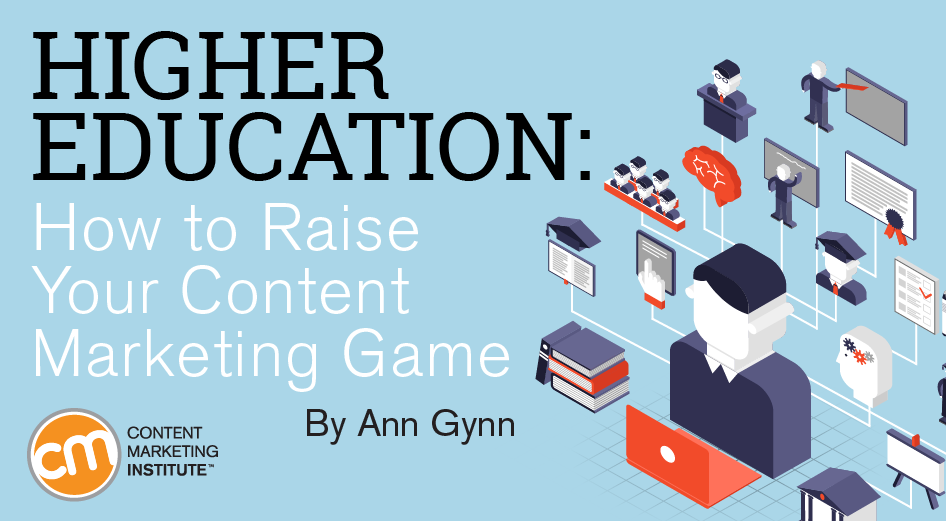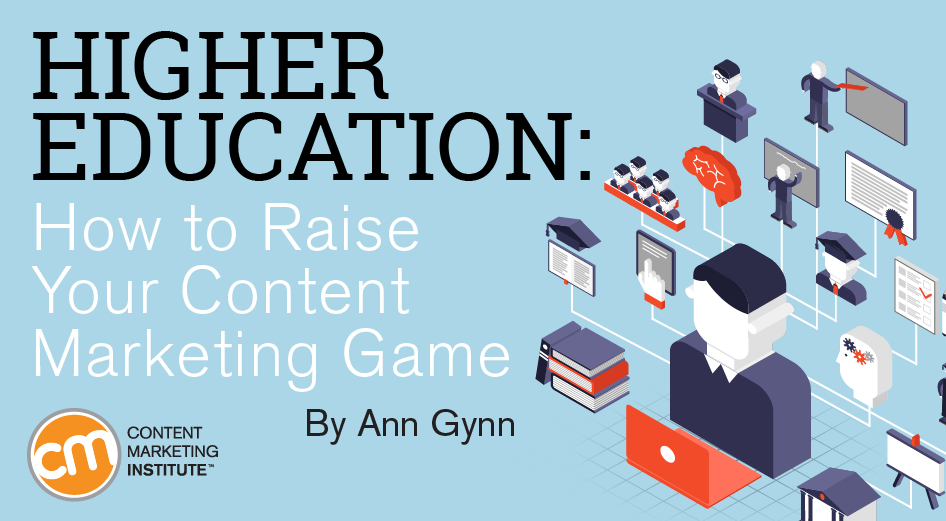Higher Education: How to Raise Your Content Marketing Game. The buyer’s journey is replaced by the student journey, says Jonah Deaver of Vertical Measures, who has worked with 200 university programs in the past six years. He says the challenge is great in marketing to students – whether it’s a community college or four-year institution. Inadequate budgeting (63%) and staffing (78%) continue to rank as top barriers to overall success in higher education marketing, according to CASE research. As Gina says, “If a picture speaks a thousand words, then video a million, and good content marketing using these, the hole in one.” Jonah says a good place to look for content ideas is from the staff who interacts with prospective students. They are fielding questions or concerns from prospects – this likely means other prospects share the same ones. Incorporate current students and alumni into your content too, which is particularly helpful in the final stages of the prospective student’s decision-making journey. “Their testimonials can be a powerful part of your content marketing message,” Jonah says. By contrast, print and direct mail showed the largest decreases.” Interestingly, CASE research also indicates that more than nine in 10 marketers in higher education use website and social media visits/activities as a metric of success – that’s more than any other measurement of marketing effectiveness. Go on your own hands-on, higher education content marketing journey with Jonah Deaver and Mike Huber of Vertical Measures.

Higher education marketers face an interesting dilemma – in many scenarios, the person who writes the check won’t ever use their services.
The buyer’s journey is replaced by the student journey, says Jonah Deaver of Vertical Measures, who has worked with 200 university programs in the past six years.
That’s why it’s critical to engage with prospective students starting from the awareness stage. “Prospective students are trying to level out emotions that range from fear, doubt, excitement, overwhelmed, motivated, and inspired. They are navigating a lot,” Jonah says. “Marketers should provide them with good information so that along the journey the students will think, ‘That X University is really helpful, I like them, and will listen to them going forward.’ This sets the stage for making a more impactful brand impression at the consideration/decision stages.”
Jonah’s insight mirrors results of the biannual CASE Educational Communications and Marketing Trends Survey. Prospective students (84%) are cited as the top priority audience by marketers who were asked to pick their top three audiences. Prospects are significantly ahead of alumni (53%), donors (43%), and parents (37%). Further down the priority audience list are current students, faculty and staff, community members, general public and media, governing boards, legislators, and athletic fans.
“Advancing our institutions must start with enrollment, and end with engagement and philanthropy,” as Theresa Flannery, vice president for communication at American University, says in the CASE report.
Obstacles and solutions
Simon A. Thalmann administers the Michigan-based Kellogg Community College’s primary social media channels, blog, and website content. He says the challenge is great in marketing to students – whether it’s a community college or four-year institution.
“In marketing meetings, we regularly bring up that it’s much easier to sell a candy bar or $10 T-shirt to someone via a Facebook ad that requires one or two clicks than it is to sell a $6,000 education,” Simon explains.
Inadequate budgeting (63%) and staffing (78%) continue to rank as top barriers to overall success in higher education marketing, according to CASE research. But when limited to identify their biggest challenges in just the past year, “strategic focus” was one of the most-mentioned topics. And when they shared their concerns on the challenges in the next five years, “keeping up with trends in profession and audience expectations,” was the most frequently cited challenge and three times greater a concern than just two years ago in the CASE study.
HOW TO DO IT: Document a content marketing strategy to ensure that staff is operating from the same page and budget resources are focused on what matters most – and what’s realistic – to achieve the institution’s goals.
Chris Hornak, CEO of BlogHands.com, raises a challenge higher education marketers face that many B2B and B2C marketers face as well – compliance and approval. A higher education institution often has so many fingers in the pie that it’s difficult to get sign-off or to expedite the publication of a newsworthy or trending piece of content.
HOW TO DO IT: Create a centralized and standardized process that receives buy-in from the key stakeholders.
College rankings for academics, affordability, social scene, program studies, etc., are well known and…

COMMENTS